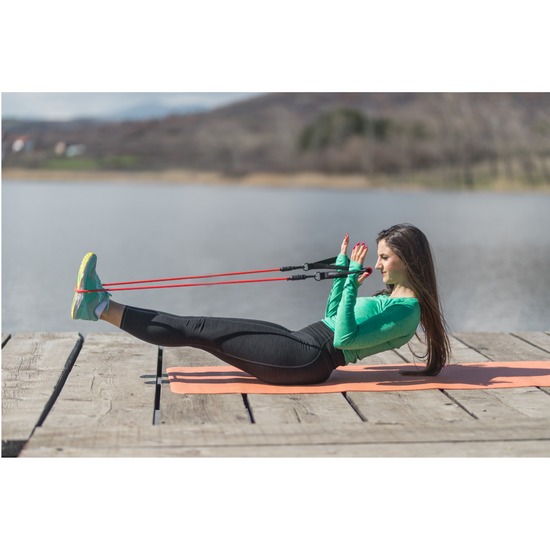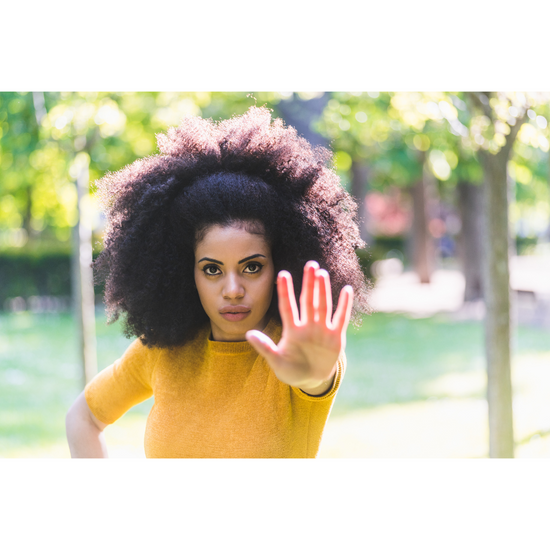Outdoor fitness training - is it better to leave it at hot temperatures? Not at all! With our 9 tips for sports in hot weather, you'll stay in top form throughout the whole of summer.
The most beautiful weeks of the year are just around the corner - a true celebration for all outdoor sportsmen!
But everyone knows that the heat can also be dangerous, especially if you raise your heart rate during exercise.
Can, may, should recreational athletes not simply take a break in the few weeks when it can get really hot in our latitudes?
Not a good idea, because a trained recreational athlete notices a decline in performance after only one week. Less fit amateur sportsmen start after three or four weeks virtually from zero again.
The total abstinence from exercise due to heat is completely unnecessary - but only if you adapt your training to the temperatures.
The 9 golden rules for fitness training in hot weather
If you follow the following rules on hot days, you will not only stay healthy throughout the summer, but also in top shape.
1. find the optimal training time
Early risers have a clear advantage in summer: the air is still quite cool and fresh in the morning. The ozone load is also lowest then. Those who are not made for sports in the early morning will shift their training to the late evening hours. You should avoid the midday sun in any case!
2. search shady places and routes
Your training takes place in an open space without shade? Not a good idea! Change places in the blazing sun at the height of summer, look for paths and places under trees. Your skin will thank you for it.
3. wear functional clothing
For sports in hot weather, you should choose clothing made of functional fibres that quickly wick perspiration away from the skin and ideally even cool you down a little. Find out in specialist shops what is best for you and your training.
4. make sure that you have a sufficient supply of liquid
If you do your outdoor workout at 30 degrees, you will perspire more than if you train at zero degrees in winter.
Accordingly, your body now needs more fluids, especially during prolonged physical activity, so that you do not dehydrate.
Suitable for drinking a lot: Your body now particularly likes mineral water with a higher magnesium or sodium content. An alternative thirst quencher is water with cucumber, ginger, lemon or berries. drinking recommendation: drink everything for 15 minutes approx. 100 millilitres, but nothing ice-cold!
5. protector head and eyes
Who doesn't know these sports guys who come to you on hot days covered in sweat and with a bright red head - and that's supposed to be fun? Maybe! But it's not healthy.
Important: Take care of your head, eyes and neck, these are your most sensitive areas now.
Means: cap, sunglasses, maybe even a damp cloth or a towel for the neck. This reduces your sports stress enormously - you will notice the difference immediately.
6. shift down a gear
Even if the sun motivates: Now is definitely not the time to strive for new heights and go to your limit.
Your heart now beats up to 20 beats faster than under normal conditions.
Experts therefore recommend that you reduce your usual training heart rate by five to ten percent when it is really hot outside. In other words: 20 repetitions of squats will now become 18 - then you are on the safe side.
7. consider environmental impacts
Pollen flies most violently in the country in the early morning, in the city in the evening. The ozone levels are highest between eleven and seven o'clock in the evening. If limit values are reached, the intensity should be reduced.
Up to 180 micrograms of ozone per cubic meter of air, the situation is unproblematic. At values between 180 and 360 micrograms, persons with sensitive airways should reduce outdoor training.
Above 360 milligrams, even healthy people should avoid outdoor sports.
8. familiarise yourself with the emergency procedures
Overheating of the body leads to heat damage. Doctors speak of heat exhaustion, heat sickness and heat stroke.
Headaches, weakness, muscle cramps, nausea and dizziness characterize heat exhaustion and heat sickness, the sunstroke.
Countermeasures: Shadow, drink, cool. Dangerous is heat stroke, which causes high fever, headaches, coordination disorders and clouding of consciousness. First aid: shade, liquid, cold compresses, get a doctor.
9. acclimatize first
Anyone who suddenly steps out of their holiday plane from their discreetly temperate home town at 30 degrees in the shade should give their body some time.
Full acclimatization can take up to a week. But for amateur athletes this is not so dramatic. They can start immediately if they first slow down the intensity and use the cooler hours of the day even when on holiday.










1 comment
cialis online pharmacy[/url]